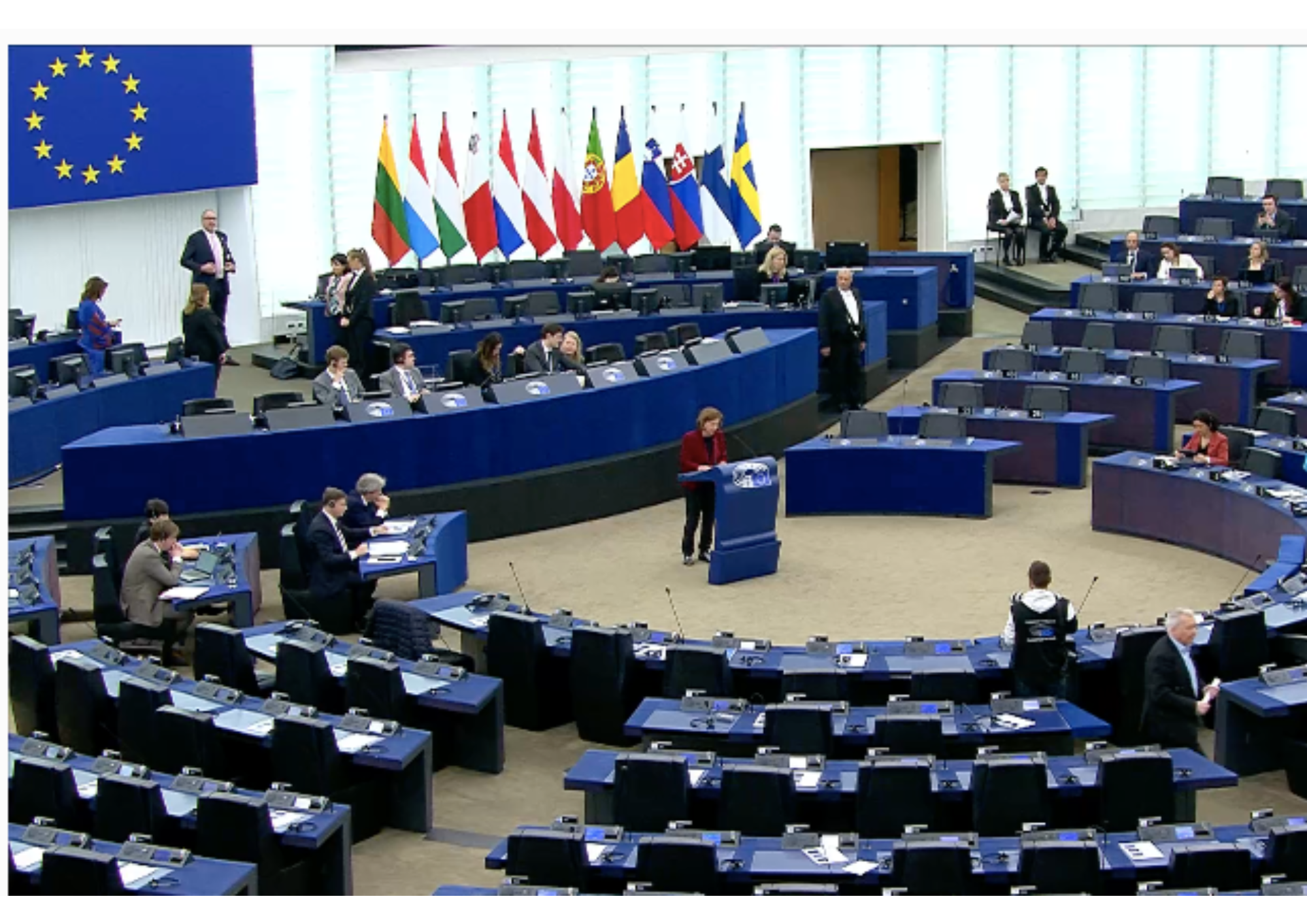The new rules, approved on Tuesday, were provisionally agreed upon between European Parliament and member state negotiators in February.
Focus on investments
MEPs significantly beefed up the rules to protect a government’s capability to invest. It will now be more difficult for the Commission to place a member state under an excessive deficit procedure if essential investments are ongoing, and all national expenditure on the co-financing of EU funded programmes will be excluded from a government’s expenditure calculation, creating more incentives to invest.
Ensuring credibility of the rules – deficit and debt reduction mechanisms
Countries with excessive debt will be required to reduce it on average by 1% per year if their debt is above 90% of GDP, and by 0.5% per year on average if it is between 60% and 90%. If a country’s deficit is above 3% of GDP, it would have to be reduced during periods of growth to reach 1.5% and build a spending buffer for difficult economic conditions.
More breathing space
The new rules contain various provisions to allow more breathing space. Notably, they give three extra years over the standard four to achieve the national plan’s objectives. MEPs secured that this additional time can be granted for whatever reason Council deems appropriate, rather than only if specific criteria were met, as initially proposed.
Improving dialogue and ownership
At the request of MEPs, countries with an excessive deficit or debt may request a discussion process with the Commission before it provides guidance on the expenditure path This would give more opportunity for a government to make its case, especially at this crucial point in the process. A member state may request that a revised national plan be submitted if there are objective circumstances preventing its implementation, for example a change in government.
The role of the national independent fiscal institutions -tasked with vetting the suitability of their government’s budgets and fiscal projections- was considerably strengthened by MEPs, the aim being that this greater role will help build national buy-in to the plans further.
Quotes by the co-rapporteurs
Markus Ferber (EPP, DE) said, “This reform constitutes a fresh start and a return to fiscal responsibility. The new framework will be simpler, more predictable and more pragmatic. However, the new rules can only become a success if properly implemented by the Commission.”
Margarida Marques (S&D, PT) said, “These rules provide more room for investment, flexibility for member states to smooth their adjustments, and, for the first time, they ensure a “real” social dimension. Exempting co-financing from the expenditure rule will allow new and innovative policymaking in the EU. We now need a permanent investment tool at the European level to complement these rules.”
The texts were adopted as follows:
Regulation establishing the new preventive arm of the Stability and Growth Pact (SGP): 367 votes in favour, 161 votes against, 69 abstentions;
Regulation amending the corrective arm of the SGP: 368 votes in favour, 166 votes against, 64 abstentions, and
Directive amending the requirements for budgetary frameworks of the
Member States: 359 votes in favour, 166 votes against, 61 abstentions.
Next steps
The Council must now give its formal approval to the rules. Once adopted, they will enter into force on the day of their publication in the EU’s Official Journal. Member states will have to submit their first national plans by 20 September 2024.
Background – how the new rules will work
All countries will provide medium-term plans outlining their expenditure targets and how investments and reforms will be undertaken. Member states with high deficit or debt levels will receive pre-plan guidance on expenditure targets. To ensure sustainable expenditure, numerical benchmark safeguards have been introduced for countries with excessive debt or deficit. The rules will also add a new focus, namely fostering public investment in priority areas. Finally, the system will be more tailored to each country on a case-by-case basis rather than applying a one-size-fits-all approach, and will better factor in social concerns.













 English
English French
French Spanish
Spanish German
German Dutch
Dutch Italian
Italian Danish
Danish Portuguese
Portuguese Greek
Greek Russian
Russian Swedish
Swedish Bulgarian
Bulgarian Hungarian
Hungarian Catalan
Catalan Ukrainian
Ukrainian Polish
Polish Basque
Basque Chinese (Simplified)
Chinese (Simplified) Japanese
Japanese Hebrew
Hebrew Arabic
Arabic Swahili
Swahili Amharic
Amharic Irish
Irish Afrikaans
Afrikaans Albanian
Albanian Armenian
Armenian Azerbaijani
Azerbaijani Belarusian
Belarusian Bengali
Bengali Bosnian
Bosnian Cebuano
Cebuano Chichewa
Chichewa Chinese (Traditional)
Chinese (Traditional) Corsican
Corsican Croatian
Croatian Czech
Czech Esperanto
Esperanto Estonian
Estonian Filipino
Filipino Finnish
Finnish Frisian
Frisian Galician
Galician Georgian
Georgian Gujarati
Gujarati Haitian Creole
Haitian Creole Hausa
Hausa Hawaiian
Hawaiian Hindi
Hindi Hmong
Hmong Icelandic
Icelandic Igbo
Igbo Indonesian
Indonesian Javanese
Javanese Kannada
Kannada Kazakh
Kazakh Khmer
Khmer Korean
Korean Kurdish (Kurmanji)
Kurdish (Kurmanji) Kyrgyz
Kyrgyz Lao
Lao Latin
Latin Latvian
Latvian Lithuanian
Lithuanian Luxembourgish
Luxembourgish Macedonian
Macedonian Malagasy
Malagasy Malay
Malay Malayalam
Malayalam Maltese
Maltese Maori
Maori Marathi
Marathi Mongolian
Mongolian Myanmar (Burmese)
Myanmar (Burmese) Nepali
Nepali Norwegian
Norwegian Pashto
Pashto Persian
Persian Punjabi
Punjabi Romanian
Romanian Samoan
Samoan Scottish Gaelic
Scottish Gaelic Serbian
Serbian Sesotho
Sesotho Shona
Shona Sindhi
Sindhi Sinhala
Sinhala Slovak
Slovak Slovenian
Slovenian Somali
Somali Sundanese
Sundanese Tajik
Tajik Tamil
Tamil Telugu
Telugu Thai
Thai Turkish
Turkish Urdu
Urdu Uzbek
Uzbek Vietnamese
Vietnamese Welsh
Welsh Xhosa
Xhosa Yiddish
Yiddish Yoruba
Yoruba Zulu
Zulu